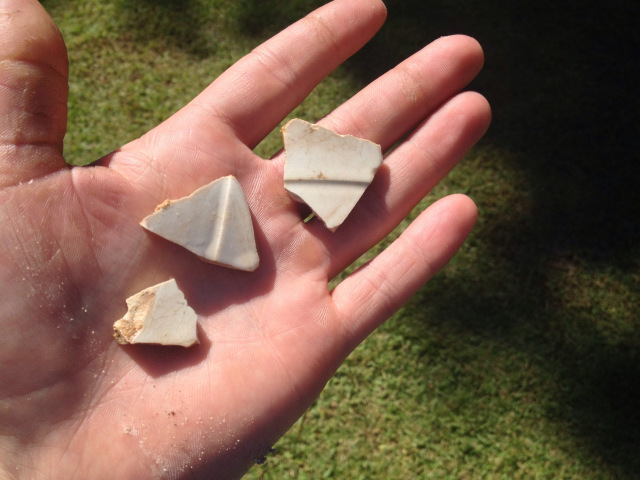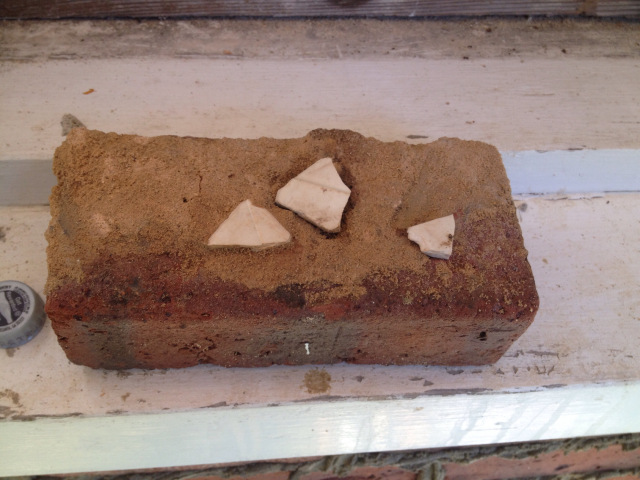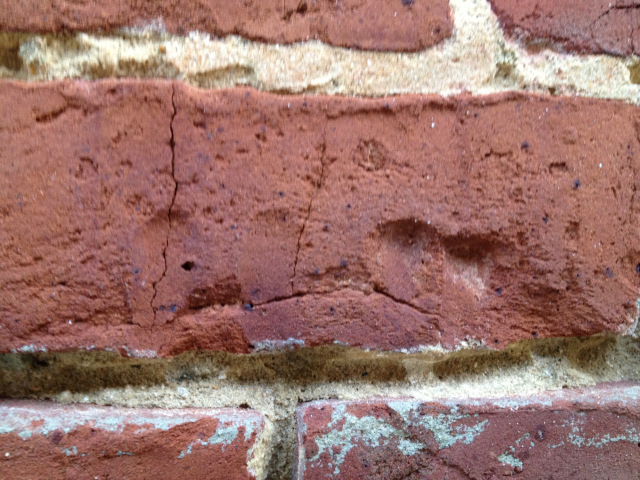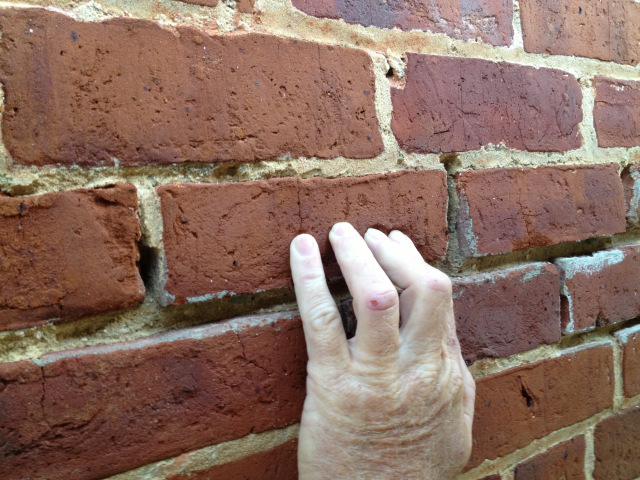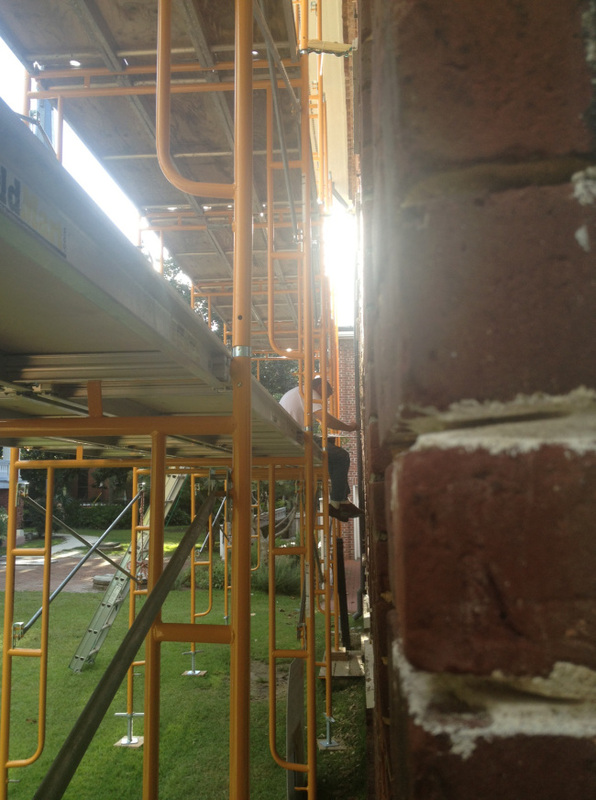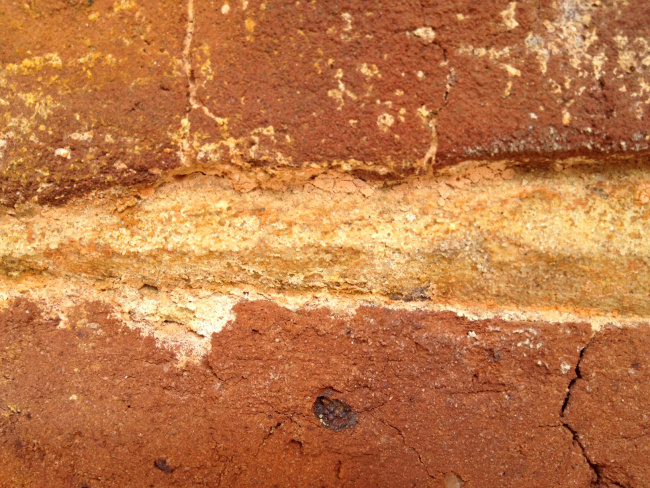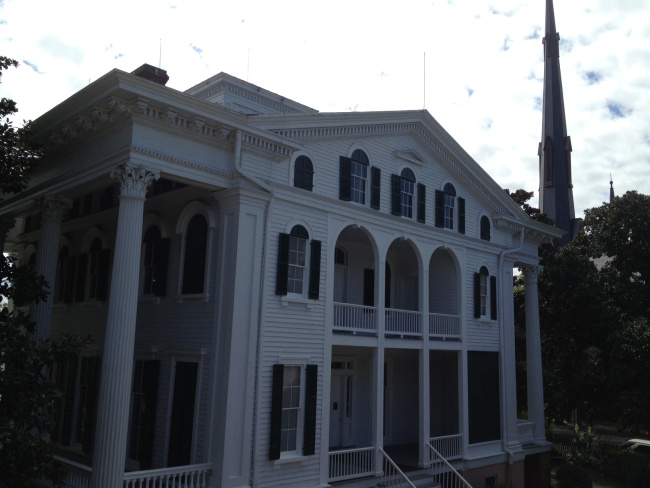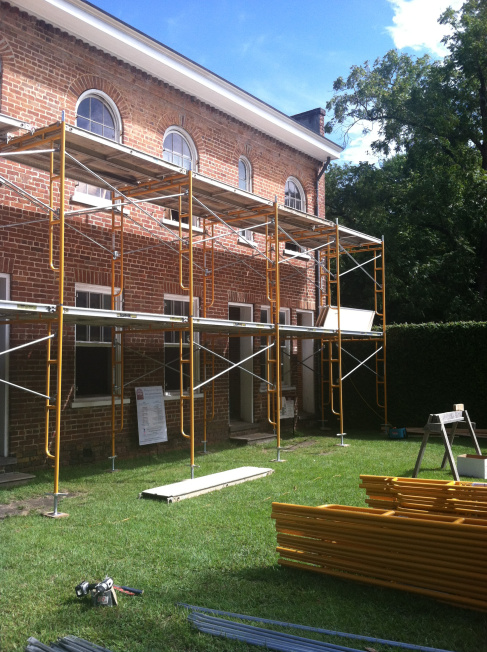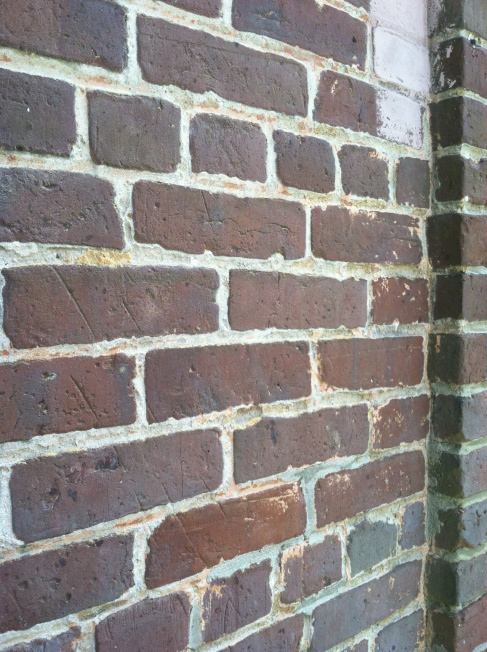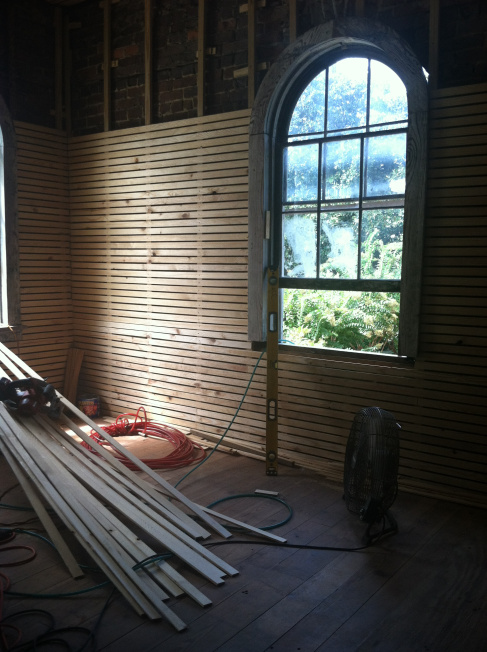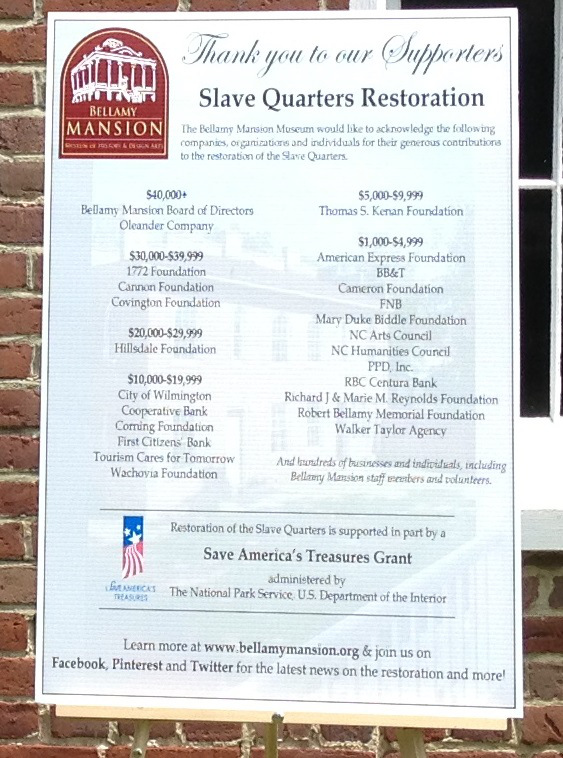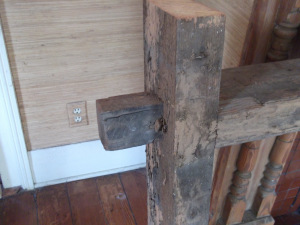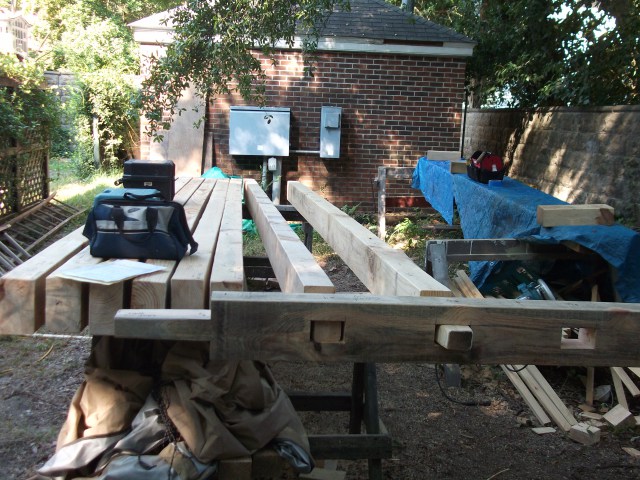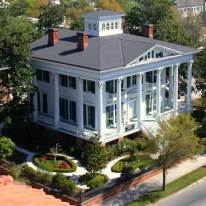|
While repointing the mortar joints on the south wall of the Slave Quarters, Wayne Thompson found something he has never seen: broken china in the mortar joint. Three pieces of white broken china were placed in the mortar joint to fill space. This china most likely dates back to 1859 when the Slave Quarters were originally constructed.
0 Comments
While repairing bricks on the Slave Quarters, Wayne Thompson of Heritage Restoration found four fingerprints in one of the bricks. The prints are from the original mason’s left hand and Wayne explained that the old craftsmen would oftentimes leave their ‘signature’ on the work in some way. Wayne revealed that he finds fingerprints on almost every building he repairs.
One of the most exciting parts of the restoration is discovering the details in the original craftsmanship. While Wayne Thompson has been restoring the mortar between the bricks on the face of the Slave Quarters, he has taken the time to point out some interesting details. The original lime mortar mix has deteriorated over time and each brick is being re-mortared by hand with a lime compound that will dry to the same color as the original in 14 days. While working on the jack arches, Wayne noticed a unique detail – the finished joints have a significant bead point in the mortar. While many have been reduced over time, he took a few shots to show the detail. Now, the task is to recreate this bead point in the jack arches, one at a time. The face of the building is slated to be complete by Friday. And for a different perspective, a view of the house from the height of the scaffolding, or the second floor of the Slave Quarters.
It is a beautiful afternoon here at Bellamy! Today we’re excited about new progress in our Slave Quarter restoration project. The lath work is almost complete on both levels and will soon be ready for the plaster coating. This type of insulation was used through the 20th century until drywall became the popular replacement. Scaffolding had also been set up to work on mortar replacements. The compound being used between the bricks has been lab tested to accurately match the mixture used during the original construction. Make sure to join us October 13th for the official unveiling and dedication of the slave quarters. Contact us at 910.251.3700 for details!
The restoration of this historical landmark is in the hands of local artisans that specialize in restoration and preservation of historic properties. Luther T. Rogers, III or Tommy is a third generation contractor, and President of Rogers Building Corporation. The Rogers team is reconstructing the building’s carpentry work back to its original state. Rogers has worked on many historical buildings in the Wilmington area including the Bellamy Mansion. Francisco Castillo is the owner of CGC Historic Restorations Inc. and is overseeing the restoration of the masonry, and plaster work. Castillo is a skilled artisan that trained as an apprentice under a master craftsman in Barcelona, Spain, he is certified through Pitt Community College, and was awarded the Historic Wilmington Foundation Preservation Award in 2009. In Wilmington he has worked on other historical site including the Latimer House and the Bellamy Mansion. Rodney Allen is contracted to restore the shutters of the building. He is a contract carpenter that has worked with the Rogers Building Corporation on several historical locations in the Wilmington area including the Williams House and the Murchison House. Details on the specific techniques of the restoration process can be found in other articles on this website.
The skilled guys from Rogers Building Corporation continue their fantastic reconstruction work on the Bellamy Mansion’s Slave Quarters. They are using a ‘Timber Framing’ method keeping true to the original construction style.
In the left picture is the mortise and tenon from a portion of the original floor. In the right picture you can see the new wood members being prepared with mortise and tenon joints. The mortise is the rectangular hole cut into the member in preparation for a tenon, also called a tongue or tang, to be inserted from a corresponding member. The tenon will then be secured to the mortise with an oak peg (not seen in picture). The lumber used for this project is Southern Yellow Pine. http://en.wikipedia.org/wiki/Mortise_and_tenon |
About UsThe museum
offers tours, features changing exhibits, and provides venue space for
weddings and special events. 503 Market Street
Wilmington, NC 28401 910.251.3700 Tours: Tues - Sat 10am- 4pm Sunday 1pm- 4pm Categories
All
Archives
April 2020
|
